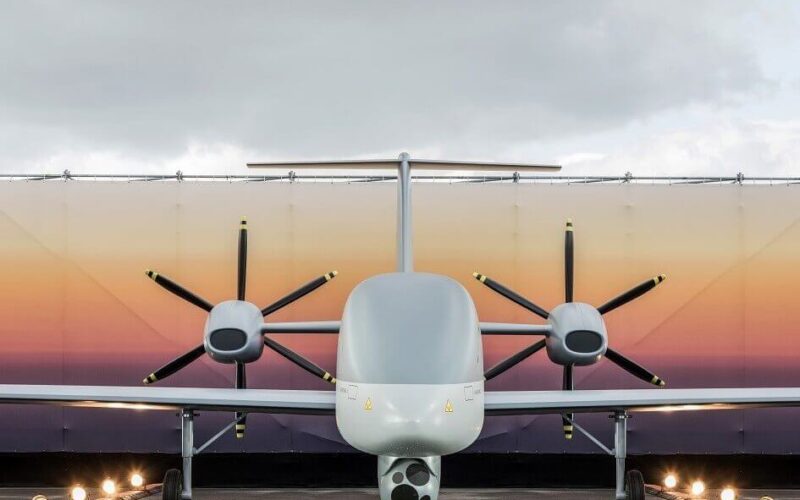Launched in 2015, the European MALE (Medium altitude, long endurance) drone project brought together France, Germany, Italy, and Spain. It regroups Airbus as the development leader, with French Dassault Aviation and Italy’s Leonardo as partners.
The European Remotely Piloted Aircraft System (RPAS) contract was supposed to be signed in 2019. However, the program was stalled following disagreements about the price of the drone, with some concerned that a MALE drone could hardly enter today’s market if it was more expensive than its competitors, especially the U.S.-built General Atomics Reaper drone.
Powered by two turboprop engines, whose manufacturer has yet to be revealed, the Eurodrone is set to be enormous, with a wingspan of 16 meters (52 feet) and a payload capacity of 2,300 kilograms. Its weight should reach approximately 11 tons when fully armed (against 4 for the Reaper).
In November 2020, a draft contract was finally put on the table and signed by France. Germany put it under review by the finance committee of the Bundestag. Despite a report concerned about budget slippage, the German representatives also agreed in April 2021.
According to Daniela Lohwasser, head of the Eurodrone project at Airbus Defense & Space, Italy also gave its approval. All that remained is Spain’s signature.
“We have the green light from Germany, Italy, and France, and we are still awaiting that of Spain”, said Lohwasser at Airbus’ Trade Media Briefing on November 30, 2021. “It may be a few more months before we are ready to finally sign the full contracts.”
Germany was expecting its first Eurodrone by 2027, and France a year later. Another slippage might put the aircraft in a complicated competitive situation. The drone hopes to replace older platforms in surveillance and reconnaissance roles, as well as have the capability to conduct ground support and strike missions.
But in September 2020, General Atomics unveiled the successor of the Reaper, set to take to the skies in 2030. It will take the form of a stealthy flying wing capable of carrying out its mission in a contested environment, something that the more conventional Eurodrone will not be able to achieve.

